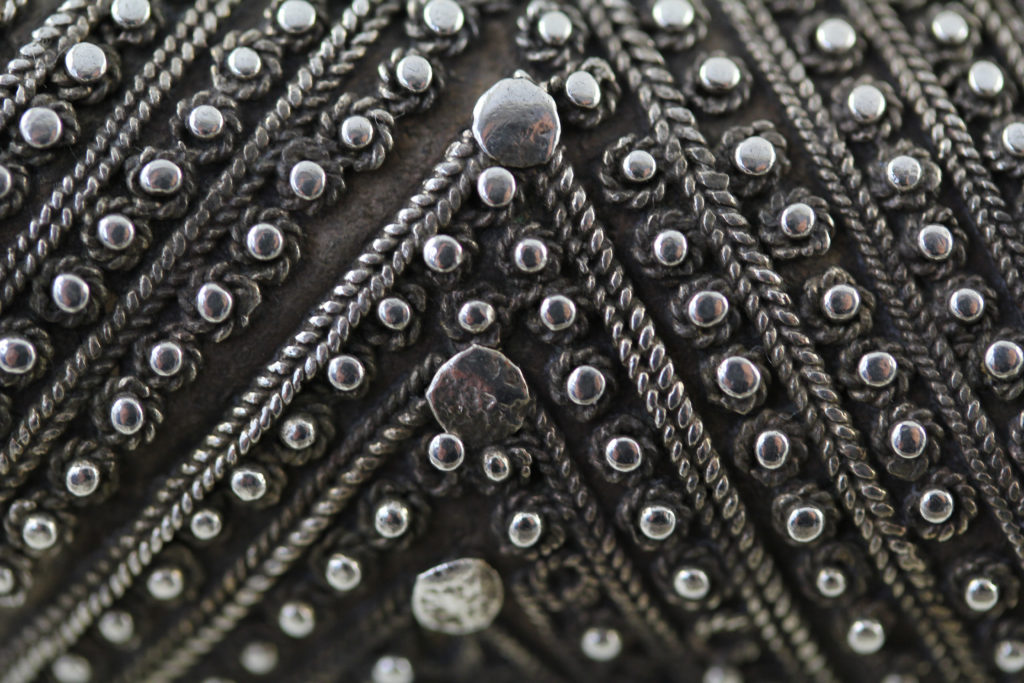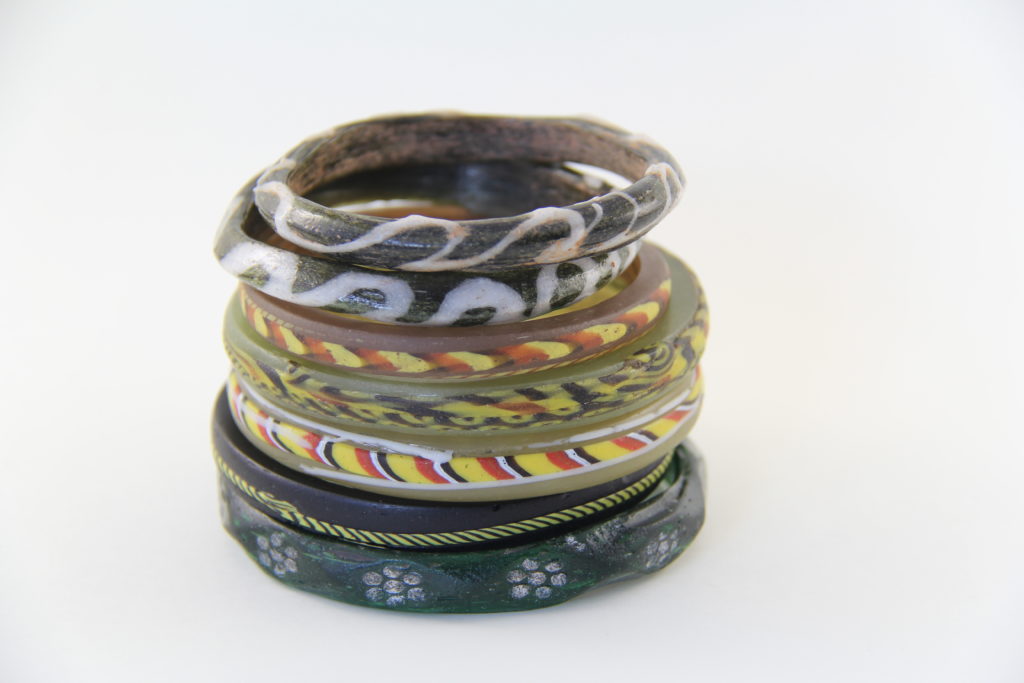One of the most interesting aspects of Arab jewellery is how it shows a rich and varied history. The history of jewellery resembles that of archaeology; layer after layer of culture has overlapped and intertwined as the centuries have passed, culminating in the jewellery worn until a generation ago.
![A lady in Palmyra, Syria. Her jewellery is reminiscent of jewellery styles worn more recently. Photo credit: Carolien van Zoest]](https://thezay.org/wp-content/uploads/2020/06/Zay-post-6-pic-1-768x1024.jpeg)
A lady in Palmyra, Syria. Her jewellery is reminiscent of jewellery styles worn more recently. Photo credit: Carolien van Zoest]
On the banks of the great rivers
The main carriers for intercultural exchange in the region have been trade, conquest and pilgrimage. Trade has always been intensive in the Middle East and its jewellery has been continually influenced by trade contacts. The most remote layers of influence in the Middle East are the early civilizations. The great cultures of the Egyptians and the Mesopotamians that produced stunningly crafted jewellery; traditional jewellery still bears traces of these civilizations, however faint. The broad, beaded collars associated with certain tribes of the Red Sea coast are reminiscent of the elaborate beadwork of the ancient Egyptians. The use of the eye as an amulet was also first seen on the banks of the Nile. Sumerian jewellery dating from the third millennium BC includes gold earrings shaped in almost exactly the same way as in current traditional jewellery.

Detail of granulation on a Yemeni silver amulet container. This technique was developed in the Graeco-Roman period
The Greek and Roman cultures
With the rise of the Macedonian empire under Alexander the Great and the subsequent Roman Empire, the Middle East saw large-scale and permanent occupation by other cultures for the first time. Some elements of Graeco-Roman adornments are still very much present in traditional jewellery, such as the terminal beads (those adjacent to the fastening) used in Greek necklaces; these are strikingly similar to the terminal beads common in Bedouin jewellery from the Arab Peninsula. Other themes that have been important in the region since the dawn of civilization, such as the stars and the moon, have been adapted in Graeco-Roman jewellery and passed on through the Middle Ages into our time frame.
Another element that has stayed with us since classical antiquity is the use of cut gemstones or intaglios in rings and pendants. These stones were hand-cut and decorated with portraits of emperors or deities, as well as various symbols, animals, names and geometrical motifs. The jewellery of the Byzantine Empire was an amalgam of previous classical styles and local Oriental traditions. Stone-setting, filigree, enamelling and niello were highly favoured techniques in this period and were passed down through generations. Many of the preferred techniques used by Byzantine jewellers stem from the Greek and Roman periods, but it is impossible to tell whether traditional jewellery picked up elements such as filigree and snake bracelets from classical antiquity or from the later Byzantine empire.

Glass bracelets from Antiquity (above) to the 1950s (below). The bottom bracelet was worn in Yemen
The Arab conquests
During the first centuries of Islam, after the conquests of Muhammad and his generals in the seventh century, jewellery remained largely as it had been. Gradually, however, it incorporated more and more Islamic elements, such as the names of Allah and the prophet, and Qur’anic inscriptions. Other elements were lost. Islam forbids the depiction of living things, so the elaborate animal heads that decorated the ends of bracelets slowly disappeared, together with other such depictions. Many creatures continued to be represented in stylized form, however. In the far West, on the Iberian peninsula, the Arabs encountered the Migration Period Visigoths. For seven centuries to come, the Arabs would rule part of the Iberian peninsula and this is still visible in jewellery: the enamelling of the Maghreb reflects the medieval enamelling of the Iberian peninsula. It is this rich variety in trade and contacts that is reflected in the traditional jewellery of the Arab world.
Where can I read more?
There are many books about jewellery. A few suggestions to enjoy about the history of jewellery are:
- Ancient Egyptian Jewelry: 50 Masterpieces of Art and Design by Nigel Fletcher-Jones shows the most famous jewellery from ancient Egypt with breathtaking photographs
- Islamic Rings and Gems. The Zucker Collection, edited by Derek Content, shows an abundance of ring types and engraved gems throughout the centuries.
- Ornament and Amulet. Rings of the Islamic Lands is one of the volumes in the Nasser D. Khalili Collections and shows a beautiful timeline of ring types
![Detail of an Etruscan fibula. Many of the techniques used here are still visible in traditional jewellery. Photo credit: National Museum of Antiquities, Leiden]](https://thezay.org/wp-content/uploads/2020/06/Zay-post-6-header-feature-image-1024x680.jpeg)
